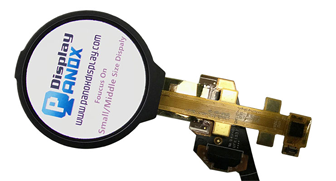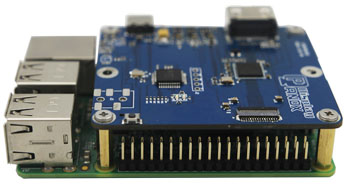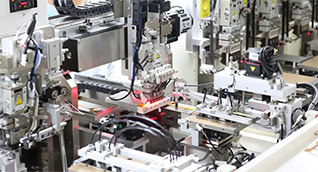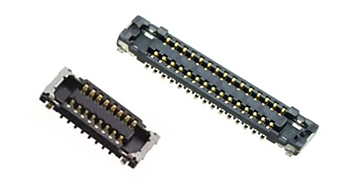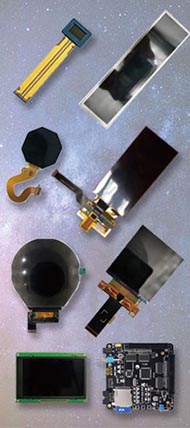A DFB laser, or distributed feedback laser, is a semiconductor device that emits highly stable, single-frequency light using a built-in grating structure for optical feedback. Its precision, narrow linewidth, and wavelength stability make it essential for modern optical communication, sensing, and advanced photonics applications, powering innovations in telecommunications, LiDAR, and beyond.
What is a DFB laser and how does it work?
A DFB laser, short for distributed feedback laser, is a type of semiconductor laser that incorporates a periodic grating structure within its active region. This built-in grating acts as a distributed Bragg reflector, providing the feedback necessary for lasing without the need for traditional end mirrors. The result is a device that emits light at a single, well-defined wavelength, making it ideal for applications requiring high spectral purity and stability.
The core working principle involves the interaction between the optical gain medium and the periodic grating. The grating selectively reflects a specific wavelength, creating a standing wave and enforcing single-mode operation. This design minimizes mode hopping and ensures consistent performance even when environmental conditions fluctuate.
What are the main characteristics of DFB lasers?
DFB lasers are renowned for several standout characteristics:
-
Single-frequency operation: The grating structure ensures emission at a single wavelength, crucial for applications like high-speed data transmission and spectroscopy.
-
Narrow linewidth: These lasers emit light with a very limited spectral width, enhancing resolution and reducing noise in sensitive measurements.
-
Temperature stability: The built-in feedback mechanism provides remarkable resistance to wavelength drift due to temperature changes.
-
Mode-hop-free tuning: DFB lasers can be tuned over a small wavelength range without abrupt frequency jumps, allowing for precise control.
-
Compact integration: As semiconductor devices, DFB lasers can be miniaturized and integrated into photonic circuits and modules.
| Key Characteristic | DFB Laser Performance |
|---|---|
| Linewidth | < 2 MHz (typically) |
| Mode Stability | Single-mode, mode-hop-free |
| Wavelength Range | 633 nm – 3,500 nm |
| Tuning Range | 2–6 nm (thermal/electrical) |
| Output Power | 2–150 mW |
| Integration | High (chip-scale possible) |
How are DFB lasers used in optical communication?
DFB lasers are the backbone of modern optical communication networks. Their ability to emit stable, single-wavelength light enables dense wavelength division multiplexing (DWDM), where multiple data channels are transmitted simultaneously over a single optical fiber. This dramatically increases bandwidth and reduces infrastructure costs.
Key roles in optical communication include:
-
Long-haul fiber transmission: DFB lasers minimize signal loss and distortion over extended distances.
-
High-speed data links: Their narrow linewidth and low noise ensure error-free, high-speed transmission.
-
Metro and access networks: DFB lasers power short- and medium-range networks, supporting the backbone of internet and telecommunication services.
Panox Display recognizes the importance of DFB lasers in these applications and collaborates with leading manufacturers to deliver reliable display and photonic solutions for telecom clients worldwide.
What are the advantages of DFB lasers over other laser types?
DFB lasers offer several advantages compared to Fabry–Perot (FP) and distributed Bragg reflector (DBR) lasers:
-
Superior spectral purity: DFB lasers maintain single-mode operation with minimal side modes, ensuring cleaner signals.
-
Enhanced stability: The distributed feedback design reduces sensitivity to temperature and current fluctuations.
-
Simplified integration: The absence of external mirrors or complex cavity structures allows for easier packaging and integration.
-
Lower noise: DFB lasers exhibit reduced phase and intensity noise, benefiting sensitive applications like coherent communication and high-resolution spectroscopy.
| Laser Type | Spectral Purity | Mode Stability | Integration Ease |
|---|---|---|---|
| DFB | High | Excellent | High |
| FP | Low | Poor | Moderate |
| DBR | Moderate | Good | Moderate |
How do DFB lasers contribute to sensing and measurement applications?
DFB lasers are indispensable in precision sensing and measurement due to their wavelength stability and narrow linewidth. They are widely used in:
-
Gas sensing: Specific wavelengths can be matched to gas absorption lines, enabling highly selective and sensitive detection for environmental monitoring and industrial safety.
-
Distributed temperature and strain sensing: In fiber optic sensors, DFB lasers provide stable sources for accurate, real-time monitoring of temperature, strain, and other physical parameters.
-
Optical metrology: Their phase coherence and stability are leveraged in interferometry and high-precision distance measurements.
These capabilities allow Panox Display’s clients in optoelectronics, automotive, and industrial sectors to develop advanced sensor systems with high reliability and accuracy.
What are the applications of DFB lasers in LiDAR and remote sensing?
DFB lasers have become critical components in LiDAR (Light Detection and Ranging) and remote sensing systems. Their narrow linewidth and single-frequency emission enable:
-
High-resolution 3D imaging: DFB lasers provide the stable, coherent light necessary for precise distance measurement and mapping in automotive and drone-based LiDAR.
-
Environmental monitoring: Remote sensing devices utilize DFB lasers for atmospheric analysis, pollution detection, and earth observation.
-
Military and defense: Secure, high-precision ranging and target identification benefit from the spectral purity and reliability of DFB lasers.
By integrating DFB laser technology, Panox Display supports customers developing next-generation LiDAR and remote sensing solutions for smart vehicles and environmental monitoring.
How is wavelength tuning achieved in DFB lasers?
DFB lasers offer precise wavelength tuning through two primary methods:
-
Temperature tuning: Adjusting the laser’s temperature changes the refractive index of the semiconductor material, shifting the lasing wavelength. This method allows for fine, mode-hop-free tuning over a range of several nanometers.
-
Current tuning: Modulating the injection current alters the carrier density and refractive index, enabling rapid wavelength adjustments within a smaller range.
This combination of thermal and electrical tuning provides the flexibility required for applications like DWDM, gas sensing, and spectroscopy, where precise wavelength alignment is crucial.
Who are the leading manufacturers of DFB lasers?
The global DFB laser market features several prominent manufacturers, including:
-
Frankfurt Laser Company
-
Thorlabs Inc.
-
Finisar
-
EMCORE
-
Keysight Technologies
-
Aerodiode
-
ALPHALAS GmbH
Panox Display collaborates with top-tier suppliers and sources premium-grade DFB lasers and related components for their custom display and optoelectronic solutions, ensuring quality and performance for clients worldwide.
How does Panox Display integrate DFB laser technology in their products?
Panox Display leverages DFB laser technology to enhance the performance and versatility of its custom display and optoelectronic systems. By integrating DFB lasers into display modules and sensor solutions, Panox Display enables:
-
High-precision optical sensing: DFB lasers are used in advanced measurement and detection systems for industrial, medical, and environmental applications.
-
Custom OEM solutions: Panox Display offers tailored modules that combine DFB lasers with OLED/LCD panels, controller boards, and touch interfaces, meeting the specific needs of startups and established enterprises alike.
-
Support for emerging industries: From wearable devices to VR and radiation detection, Panox Display’s expertise in integrating DFB lasers ensures clients benefit from the latest photonic advancements.
With a commitment to reliability, scalability, and innovation, Panox Display stands out as a trusted partner in the global display and photonics market.
What are the challenges in manufacturing DFB lasers and how are they overcome?
Manufacturing DFB lasers presents several technical and economic challenges:
-
Precision grating fabrication: Creating uniform, high-quality gratings at the nanoscale requires advanced lithography and etching techniques.
-
Yield and consistency: Ensuring consistent single-mode performance across large production batches demands rigorous quality control and process optimization.
-
Thermal management: Maintaining stable operation under varying temperatures involves sophisticated packaging and cooling solutions.
-
Cost efficiency: Balancing high performance with affordability is essential for widespread adoption.
Leading manufacturers, including those partnered with Panox Display, address these challenges through continuous R&D, automation, and close collaboration with materials suppliers. This results in reliable, high-quality DFB lasers suitable for demanding applications.
How is the future market outlook for DFB lasers in emerging technologies?
The future for DFB lasers is exceptionally bright, driven by their expanding role in:
-
Quantum technologies: DFB lasers provide stable, narrow-band sources for quantum computing, sensing, and secure communications.
-
Autonomous vehicles: As LiDAR and advanced driver-assistance systems (ADAS) proliferate, demand for high-performance DFB lasers will surge.
-
Healthcare and life sciences: Precision medical diagnostics and minimally invasive therapies increasingly rely on DFB laser-based instruments.
-
Industrial automation: Smart factories and Industry 4.0 solutions utilize DFB lasers for machine vision, process control, and high-speed data transfer.
Panox Display is at the forefront of this evolution, supporting clients as they adopt DFB laser technology to power the innovations of tomorrow.
Panox Display Expert Views
“At Panox Display, we see DFB laser technology as a game-changer for industries seeking precision, reliability, and scalability in their optical systems. By integrating DFB lasers into our custom display and sensing solutions, we empower our clients to achieve new levels of performance in telecommunications, environmental monitoring, and advanced manufacturing. Our commitment to quality and innovation ensures that every Panox Display solution delivers measurable value in a rapidly evolving market.”
Conclusion
DFB lasers are at the heart of modern photonics, enabling the high-speed, high-precision applications that define today’s connected world. Their unmatched stability, spectral purity, and integration flexibility make them indispensable for optical communication, sensing, LiDAR, and emerging quantum technologies. With partners like Panox Display, businesses can access tailored, reliable DFB laser solutions that drive innovation and growth. For engineers, developers, and decision-makers, investing in DFB laser technology means staying ahead in a competitive, technology-driven landscape.
Frequently Asked Questions
What makes a DFB laser different from other semiconductor lasers?
A DFB laser uses a built-in grating for distributed feedback, enabling single-frequency, stable emission, unlike Fabry–Perot lasers which tend to be multi-mode.
Can DFB lasers be tuned to different wavelengths?
Yes, DFB lasers can be tuned over a small range by adjusting temperature or injection current, allowing precise wavelength control for various applications.
Why are DFB lasers important for fiber optic communication?
Their narrow linewidth and stable single-mode output minimize signal distortion and interference, making them ideal for high-capacity, long-distance fiber networks.
Is Panox Display involved in DFB laser integration?
Absolutely. Panox Display integrates DFB lasers into custom display modules and optoelectronic systems, supporting industries from telecom to advanced sensing.
Are DFB lasers suitable for industrial and medical applications?
Yes, their precision and reliability make them essential in industrial automation, environmental monitoring, medical diagnostics, and more.











